Ukrainian Galician Army
Ukrainian Galician Army (Українська галицька армія; Ukrainska halytska armiia [UHA]). The regular army of the Western Ukrainian National Republic (ZUNR), known as the Galician Army (Halytska armiia). It was formed around a nucleus consisting of the Legion of Ukrainian Sich Riflemen and other Ukrainian detachments of the Austro-Hungarian army, which recognized the authority of the Ukrainian National Rada and took part in the November Uprising in Lviv, 1918.
The UHA was a well-organized and disciplined force. It was established as a regular army of the ZUNR by the law of 13 November 1918 on compulsory military service, which empowered the State Secretariat for Military Affairs (DSVS) to divide the country into military districts, to define an organizational structure for the army, and to call up Ukrainian males between the ages of 18 and 35 for military duty. Three military regions (Lviv, Ternopil, and Stanyslaviv) were introduced, each consisting of four districts (covering five to eight counties). The military commander of each district was responsible for recruitment, training, and combat readiness.
Until 9 June 1919 all military affairs of the ZUNR came under the jurisdiction of the State Secretariat for Military Affairs (DSVS), which was divided into a chancellery and 16 departments, and was headed initially by Col Dmytro Vitovsky (to 13 February 1919) and then by Col Viktor Kurmanovych. With the installation of the Dictatorship of the Western Province of the Ukrainian National Republic, the functions of the DSVS were transferred partly to the Military Chancellery, directed by Lt Col K. Dolezhal, and partly to the Supreme Command of the Ukrainian Galician Army (NKHA).
The Supreme Command of the Ukrainian Galician Army (NKHA) was set up in November 1918 in Lviv. Its chief, the UHA supreme commander, was appointed by the head of the Ukrainian National Rada and later by the dictator of the Western Province of the Ukrainian National Republic. All UHA units at the front came under its command; all other UHA units came under the district commands, and ultimately under the State Secretariat for Military Affairs (DSVS). When the DSVS was abolished, the NKHA assumed responsibility for supplies and training. The supreme commanders of the UHA were Col Dmytro Vitovsky (29 October–5 November 1918), Col Hryhorii Kossak (to 9 November), Col Hnat Stefaniv (to 10 December), Brig Gen Mykhailo Omelianovych-Pavlenko (to 9 June 1919), Maj Gen Oleksander Hrekov (to 5 July), Brig Gen Myron Tarnavsky (to 7 November), and Brig Gen Osyp Mykytka (to 10 February 1920). The chiefs of the General Staff included Col Mykola Marynovych (to 5 November 1918), Maj Semen Goruk (to 10 December), Col Yevhen Myshkivsky (to 12 February 1919), Col Viktor Kurmanovych (to 7 June), Col Alfred Schamanek (to 7 November 1919, and 10 February–1 March 1920), and Gen Gustav Ziritz (to 10 February 1920).
The territory controlled by the UHA was divided into 13 military districts of four or five counties each: Berezhany, Chortkiv, Drohobych, Kolomyia, Lviv, Peremyshl, Rava-Ruska, Sambir, Sokal, Stanyslaviv, Stryi, Ternopil, and Zolochiv (Lviv region). The commands of the districts, which grew out of military committees established in November 1918, were responsible for security and public order in the army's rear. They conducted drafts, trained draftees and organized them into infantry units, and protected government property.
The first regular UHA units were joined by worker and student detachments, which sprang up spontaneously to resist the Polish underground in Lviv and the Polish army invading Galicia. By December 1918 the Galician Army consisted of combat groups of different strength and profile—regular, semi-insurgent, and insurgent. The strongest were the Navariia, Stare Selo, and Skhid groups operating around Lviv. On the northern border of the ZUNR the Northern Group of the Ukrainian Galician Army under Col Osyp Mykytka was organized to repel the Polish offensive. The oblast command in Stryi, under Col Hryhorii Kossak, took charge of the groups that sprang up on the western front, including the Komancha, Liutkiv, Staryi Sambir, Hlyboka, Krukenychi (see Krukenychi Group), Rudky, South I, and South II groups. They did not form a continuous front and were rarely in contact with the NKHA or with each other. At the beginning of December 1918, when Gen Mykhailo Omelianovych-Pavlenko took command of the Galician Army, it numbered 30,000 officers and men, half of whom were combat-ready.
In December 1918 all field units were brought under the Supreme Command of the Ukrainian Galician Army, and in January–February 1919 they were organized into three corps, each consisting of four brigades. A brigade generally had three to six infantry battalions (sometimes merged into two regiments), a cavalry company, a field artillery regiment with four to six batteries, a sapper company, and communications, auxiliary, and support groups. The First Corps, based in Kaminka-Strumylova and commanded by Col Osyp Mykytka, consisted of the Sokal Brigade of the Ukrainian Galician Army, the Rava Brigade of the Ukrainian Galician Army, the Uhniv Brigade of the Ukrainian Galician Army, and the Yaniv Brigade of the Ukrainian Galician Army. The Second Corps, based in Bibrka and commanded by Col Myron Tarnavsky, included the First Brigade of the Ukrainian Sich Riflemen and the Kolomyia Brigade of the Ukrainian Galician Army, the Third (Berezhany) Brigade of the Ukrainian Galician Army, and the Zolochiv Brigade of the Ukrainian Galician Army. The Third Corps, based in Stryi and commanded by Col Hryhorii Kossak and then Gen M. Gembachiv, encompassed the Lviv Brigade of the Ukrainian Galician Army (initially named the Seventh Stryi Brigade), the Sambir Brigade of the Ukrainian Galician Army, the Mountain Brigade of the Ukrainian Galician Army, and the Stryi Brigade of the Ukrainian Galician Army (formed out of the Krukenychi Group and the Hlyboka Group). The basic combat unit was the kurin (51 on the Polish front, 48 on the Soviet front), consisting of four companies (sotni), which were in turn divided into platoons (choty). The UHA also included the Jewish Battalion of the Ukrainian Galician Army.
In June 1919 the UHA at its maximum strength numbered 70,000 to 75,000 men, including reserves. Its proportion of officers to men was very low, only 2.4 percent. To overcome the shortage of staff and higher officers, non-Ukrainian specialists of the Austrian-Hungarian army and officers of the Army of the Ukrainian National Republic were recruited. To train young officers three infantry schools, an artillery, and a communications cadet school were set up in Galicia, and one infantry and artillery school in central Ukraine. The UHA also operated the Press Office of the Supreme Command of the Ukrainian Galician Army and the Theater of the Supreme Command of the Ukrainian Galician Army.
The bulk (67 percent) of the combat force was infantry. Each kurin had a machine-gun company. About 10 percent of the soldiers belonged to artillery units, with 58 batteries on the Polish front and 47 on the Soviet front. The Galician Army also had two or three armored cars and two armored trains. Cavalry did not play an important role, because the State Secretariat for Military Affairs preferred the tactics of positional warfare. On Gen Oleksander Hrekov's recommendation a cavalry brigade and regiment were set up in June and July 1919 with a total of 1,340 sabers. The first air force unit was organized by Capt Petro Franko in Krasne. With the help of former pilots of the Russian army, a flying regiment under Col B. Huber (later under Col D. Bulat Kanukov) was formed. Until April 1919 the UHA had an advantage in the air over the Polish forces, but it lost it as the Polish strength increased after the arrival of the army led by Gen Józef Haller (150 Polish planes vs 40 Ukrainian). Four of the nine sapper companies were attached to the corps and five to the brigades. The companies were formed and trained by the reserve sapper kurin in Chortkiv, which was reorganized into a technical kurin under K. Kiziuk's command. Communications specialists were trained in Stanyslaviv. Each corps had two to five field hospitals and sanitary trains. Because of a severe shortage of medical personnel and supplies, medical care deteriorated quickly, and by the end of 1919 the army fell victim to typhus.
In the Ukrainian-Polish War in Galicia, 1918–19, the UHA scored some victories against the numerically stronger and better-equipped Polish forces. After the Chortkiv offensive it retreated across the Zbruch River and joined up with the UNR Army to take part in the Ukrainian-Soviet War, 1917–21. Because the UHA was blockaded by the Allied Powers, was decimated by typhus, and lacked supplies, its commander Myron Tarnavsky signed an alliance with Anton Denikin on 6 November 1919 in Ziatkivtsi near Uman. This treaty caused a political crisis and mass dissatisfaction in the Galician army, but it soon lost its validity because of the rapid retreat of the disintegrating White army along the whole front in December. Reduced by typhus to a mere 5,000 combat-ready men, the UHA accepted absorption into the Red Army and became the Red Ukrainian Galician Army. Having been thrown into battle against the Poles, its First Brigade was defeated and captured; its Second and Third brigades deserted the Red Army and allowed themselves to be disarmed by the Poles. By the end of April 1920 the UHA had ceased to exist.
BIBLIOGRAPHY
Sopotnicki, J. Kampania polsko-ukrainska: Doswiadczenia operacyjne i bojowe (Lviv 1921)
Omelianovych-Pavlenko, M. Ukraïns’ko-pol’s’ka viina 1918–1919 (Prague 1929)
Shukhevych, S. Spomyny z Ukraïns’koï Hahalyts’koï Armiï 1918–1920, 5 vols (Lviv 1929)
Kuz’ma, O. Lystopadovi dni 1918 roku (Lviv 1931; 2nd edn, New York 1960)
Iaroslavyn, S. Vyzvol’na borot’ba na zakhidn’o-ukraïns’kykh zemliakh u 1918–1923 rr. (Philadelphia 1956)
Dol'nyts'kyi, Myron; Osyp Levyts'kyi; et al (eds). Ukraïns’ka Halyts’ka Armiia: Materiialy do istoriï, 4 vols (Winnipeg 1958–68)
Hirniak, N. Ostannii akt trahediï Ukraïns’koï halyts’koï armiï (Perth Amboy, NJ 1960)
Hrynevych, Iaroslav . V im’ia pravdy: Analiza bezparalel'noï trahedi Ukraïns'koï Halyts'koï Armiï (New York 1972)
Dennyk Nachal’noï komandy Ukraïns’koï halyts’koï armiï (New York 1974)
Shankovs’kyi, L. Ukraïns’ka Halyts’ka Armiia: Voienno-istorychna studiia (Winnipeg 1974)
Borodyievych, Evhen. V chotyrokutnyku smerty: Prychynky do trahediï UHA na Velykii Ukraïni. Iz voiennoho zapysnyka Tret'oï bryhady, 2d edn (New York 1975)
Lytvyn, M.; Naumenko, K. Istoriia ukraïns’koho striletstva (Lviv 1990)
Hordiienko, V. Ukraïns’ka halyts’ka armiia (Lviv 1991)
Mateiko, Roman; Mel'nychuk, Bohdan. Za ridnyi krai, za narid svii: Ukraïns'ka Halyts'ka Armiia na Ternopil'shchyni (Ternopil 1993)
Pavlenko, Mykola. Ukraïns'ka Halyts'ka Armiia v umovakh internuvannia na terenakh Chekhoslovachchyny (Kyiv 1999).
———. Ukraïns'ki viis'kovopoloneni i internovani u taborakh Pol'shchi, Chekhoslovachchyny ta Rumuniï: Stavlennia vlady i umovy perebuvannia (1919–1924 rr.) (Kyiv 1999)
Futuluichuk, Vasyl'. Ukraïns'ka Halyts'ka Armiia: Viis'kovo-patriotychne vykhovannia ta vyshkil, 1918–1920 rr. (Donetsk and Lviv 2000)
Zaval'niuk, O. M.; Oliinyk, S. V. Ukraïns'ka Halyt's'ka Armiia na Podilli (Kamianets-Podilskyi 2001)
Baran, M. (ed). Ukraïns'ka Halyts'ka Armiia: Zbirka spohadiv (Lviv 2002)
Krotofil, Maciej. Ukraińska Armia Halicka, 1918–1920: Organizacja, uzbrojenie, wyposażenie i wartość bojowa sił zbrojnych Zachodnio-Ukraińskiej Republiki Ludowej (Toruń 2002)
Ianchak, Iaroslav. Z istoriï aviatisiï UHA (Lviv 2004).
Karpynets', Ivan; Steblii, Feodosii; Iakymovych, Bohdan. Halychyna: Viiskova istoriia, 1914–1921 (Lviv 2005)
Vyslots'kyi, Ivan. Spomyny rozvidchoho starshyny z Pershoï svitovoï viiny: Avstriis'ka armiia, Kyïvs'ki Sichovi stril'tsi i Ukraïns'ka Halyts'ka Armiia (Lviv 2005)
Kuchabsky, V. Western Ukraine in Conflict with Poland and Bolshevism, 1918–1923 (Edmonton and Toronto 2009)
Lev Shankovsky
[This article originally appeared in the Encyclopedia of Ukraine, vol. 5 (1993). The bibliography has been updated.]
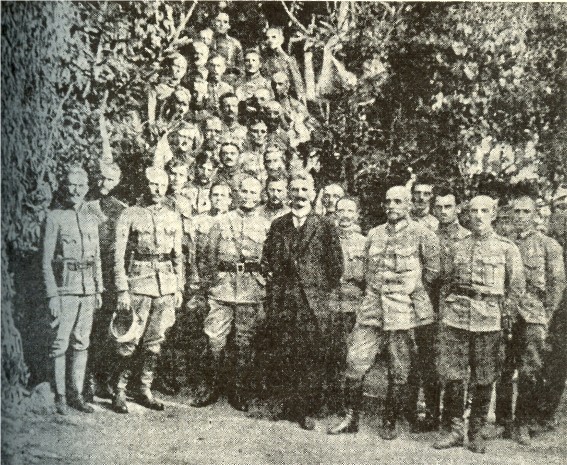
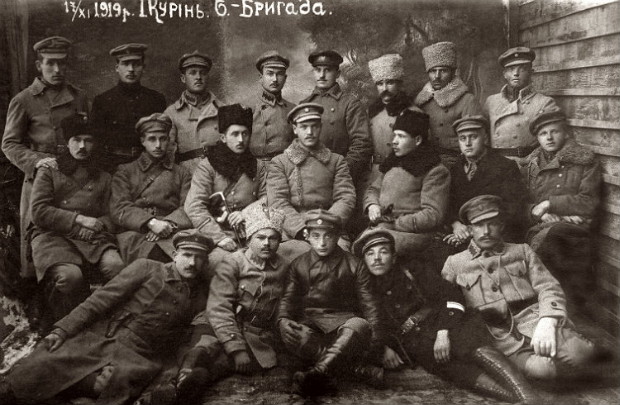
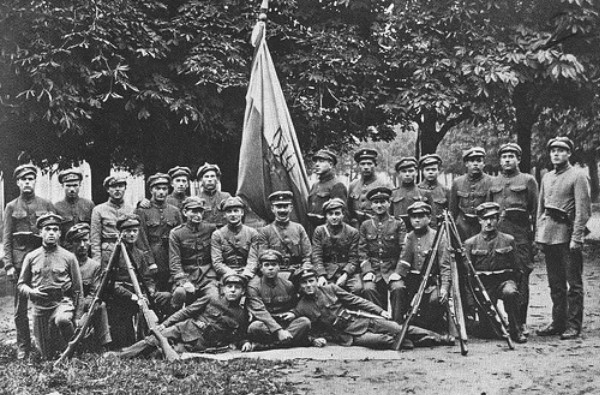
.jpg)
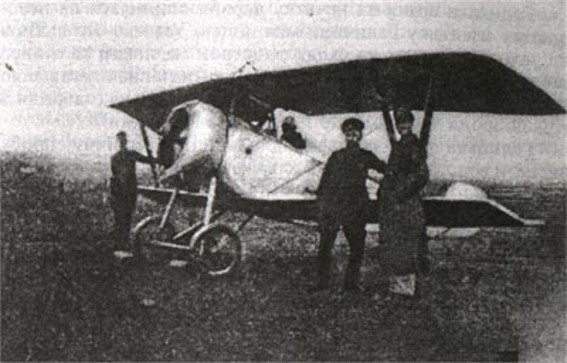
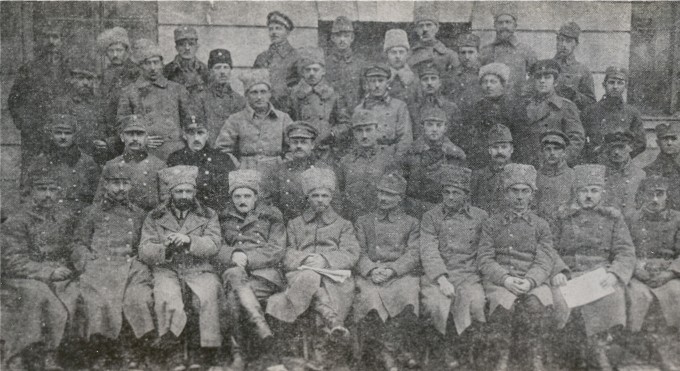
.jpg)
.jpg)
.jpg)